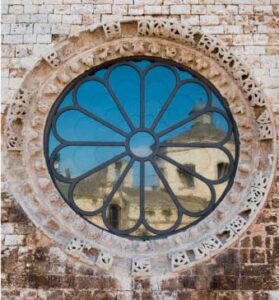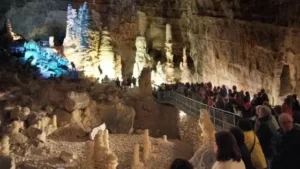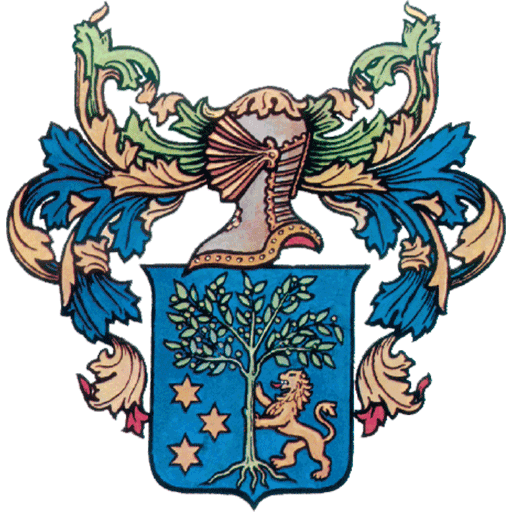
Caves of Castellana
Index
Where is Castellana Grotte?
Situata sull’altopiano calcareo della Terra dei Trulli e delle Grotte, è conosciuta soprattutto per il complesso carsico delle Grotte di Castellana. Il territorio comunale di Castellana Grotte ha un’isola amministrativa (“frazione”) nel comune di Alberobello e un’altra tra Alberobello e Monopoli.
Altri paesi da visitare nel raggio di 20 chilometri da Castellana Grotte
Putignano a 5.34 km
Conversano a 9.84 km
Noci a 11.0 km
Turi a 12.6 km
Alberobello a 12.6 km
Polignano a Mare a 12.8 km
Monopoli a 12.9 km
Fasano a 17.2 km
Sammichele di Bari a 18.3 km
Rutigliano a 19.3 km
The history of Castellana Grotte:
Castellana nasce nell’alto Medioevo grazie alla colonizzazione operata dal Monastero di San Benedetto di Conversano nel X secolo, precisamente nel 901. Ciò è testimoniato da una pergamena che si riferisce all’atto di vendita di Ermenefrido, figlio di Ermuzio, e sua moglie Trasisperga a favore di Ianniperto. Il documento parla di un Castellano Vetere e di un Castellano Novo. Nel 1098 il Conte Goffredo di Conversano, di origini normanne, dona a San Benedetto tutto il territorio e consente all’abate di radunarvi gente per popolarlo.
Its official foundation is traced back to December 1171, when the Abbot Eustasio donated the feud of Castellano with good vassalage conditions to two Otranto, Nicola and Costa, in an attempt to repopulate the agglomeration of existing houses, many of which were destroyed. during the disputes between Roger II of Sicily and the Norman dynasts, to enjoy the income again.
Il borgo vicus ricostruito ben presto si costituisce in universitas ed, in questo periodo è collocata la presunta visita di Federico II di Svevia e della sua sosta di una notte sotto l’ormai inesistente Olmo di Porta Grande. Durante la dominazione sveva il monastero conversanese di San Benedetto viene abbandonato, e nel 1226 Papa Clemente IV concede il convento di Conversano a un gruppo di monache cistercensi fuggite dalla Morea, regione della Grecia centrale. A loro vengono assegnate tutte le proprietà dell’antica abbazia, compresa Castellana, e la giurisdizione ecclesiastica: ovvero la potestà ordinaria su clero e popolo di Castellana più il diritto di impugnare il pastorale e cingere la mitra.
Nei primi anni del quattrocento, Castellana cercò di liberarsi dalle dipendenze feudali della Contea di Conversano e dalla badessa del monastero benedettino di Conversano a cui versava le decime. Approfittando della lotta che imperversava la casata dei d’Angiò per il trono del Regno di Napoli, nel 1407 trecento giovani castellanesi, guidati dal valoroso Ottavio da Castellana, si schierarono dalla parte del Re Ladislao d’Angiò all’assedio di Taranto contro Maria d’Enghien, sorella della badessa e vedova del principe Raimondo Orsini Del Balzo. Ammirati per le loro prove di valore, i combattenti castellanesi passarono alle cronache come i Leoni di Fortezza. Ottenuta la vittoria con la resa di Maria d’Enghien, con a seguito il suo matrimonio risolutore col re Ladislao d’Angiò, Castellana ottenne il privilegio promesso.
Dopo la morte di Ladislao, nel 1426, la Regina Giovanna II di Napoli nomina duca di Bari il nobile abruzzese Giacomo Caldora, il quale ottenne, tra gli altri, anche il territorio di Castellana. I Caldora ebbero potere sino al 1440 quando Antonio Caldora, figlio primogenito di Giacomo e suo successore al titolo di duca di Bari, venne spodestato dal viceduca Marino Reguardati da Norcia, che offrì l’intero ducato, assieme a Castellana, a Giovanni Antonio Orsini del Balzo, principe di Taranto e figlio di Maria d’Enghien dal suo primo marito.
Nel 1456, Castellana e l’intera contea di Conversano (comprendente anche i centri di Casamassima, Castiglione, Noci e Turi) costituirono la dote di Caterina, figlia di Giovanni Antonio Orsini Del Balzo, andata in sposa al duca d’Atri Giulio Antonio Acquaviva. Gli Acquaviva, che detennero i diritti feudatari fino alla loro abolizione nel 1806, furono feudatari più umani verso il popolo, mettendo in condizione i coloni di divenire piccoli proprietari che trasformarono il territorio, coltivando uva e grano e traendone rilevanti benefici economici.
Do you want to visit Castella Grotte and save on the price of the B&B? Check our availability and ask for a discount!
What to see in Castellana Grotte?
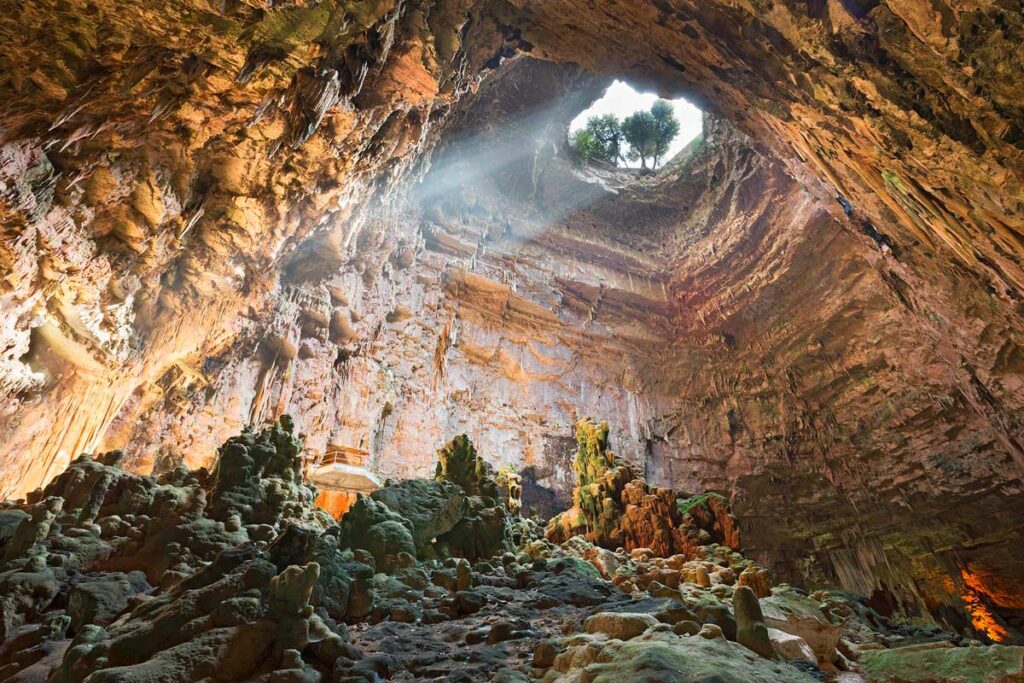
The Caves, A COMPLEX OF UNDERGROUND CAVITIES
The Castellana Caves, a complex of underground caves of karst origin, of considerable tourist interest, among the most beautiful and spectacular in Italy, are located in the municipality of Castellana-Grotte, about 1.5 km from the town.
They develop for a length of 3348 meters and reach a maximum depth of 122 meters from the surface. The indoor temperature is around 16.5 ° C.
Situate alle porte della Valle d’Itria, a pochi chilometri da borghi incantevoli come Alberobello, Cisternino, Polignano a Mare, le Grotte di Castellana si aprono nelle Murge sud orientali a 330 m s.l.m. sull’altopiano calcareo formatosi nel Cretaceo superiore, circa novanta-cento milioni di anni fa.
La bellezza delle Grotte di Castellana richiama visitatori da tutto il mondo, e dal giorno della loro apertura al pubblico, più di 15 milioni di persone hanno percorso le sue vie sotterranee. La visita alle Grotte si snoda lungo un percorso di 3 Km: una straordinaria escursione guidata, a circa 70 metri di profondità, in uno scenario stupefacente, dove caverne dai nomi fantastici, canyon, profondi abissi, fossili, stalattiti, stalagmiti, concrezioni dalle forme incredibili e dai colori sorprendenti sollecitano la fantasia di bambini e adulti.
The mouth of the Grave, the deep chasm at the entrance to the caves, has always aroused a sense of anguish and fear in those who traveled the nearby country road, especially at dusk, when it could happen that they came out of the abyss. , together with the bats that fluttered in the fields hunting for insects, vapors, considered by superstitious travelers to be the souls of suicides, who, having found their death in the Grave, tried in vain to ascend to heaven.
The discovery
Vincenzo Longo (1737-1825), humanist and jurist from Castellana, was perhaps the first man to go down to the Grave together with a large group of young peers.
The memory of the enterprise, enriched by many and different details, was perpetuated in the memory of the witnesses of the time and from these it was handed down to subsequent generations.
Le Grotte di Castellana sono, quindi, a pieno titolo, un’imperdibile occasione per ammirare uno dei luoghi naturali più sorprendenti di una Puglia meravigliosa.
The unsolved mysteries
NEW CAVITIES TO EXPLORE
La Grave is far from having revealed all its secrets. A depression at the base of the north wall of the cave, discovered following the cleaning of the abyss of the Grave, suggests that there may be new corners to discover and new cavities to explore.
In addition, on-site excursions and surface geophysical research conducted in past years with various survey techniques, have allowed us to hypothesize the existence of new branches, which would branch off from the initial chasm.
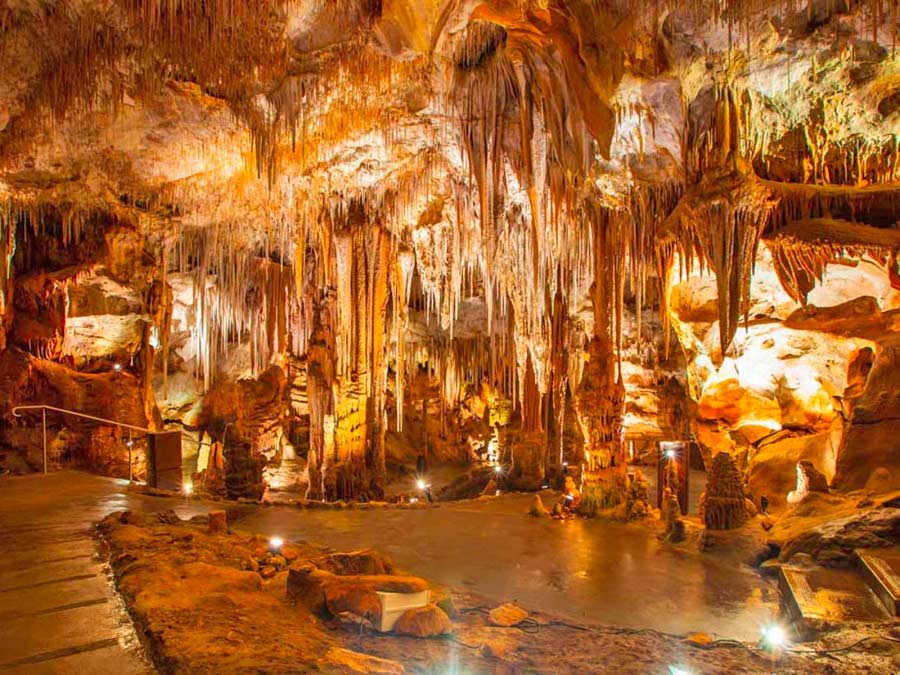
Church of Pope San Leone I Magno co-patron
Named after St. Leo the Great as per the epigraph on the façade, it was built in 1383 by expanding an existing Romanesque church to which a Norman defensive tower was annexed, then converted into a bell tower. On the sides of the main facade you can admire the statues of Leo the Great and John the Baptist, hitherto placed internally on the main altar, while on the pediment there is the sculpture of the Madonna Consolatrice. The interior, divided into three large naves, is embellished with arches and a fresco discovered and recently restored (1970) in a late Gothic style, sculptures by Aurelio Persio and valuable canvases by Andrea Miglionico and Vincenzo Fato from the castle. The wall in front of the main altar is dominated by a majestic organ. Noteworthy is the presence of the chapel dedicated to Corpus Domini where in the frontal of the altar you can admire a refined image of the Madonna and Child.
Sanctuary of Maria SS. of Vetrana
It stands on one of the five hills of Castellana at 317 m a.s.l. Originally there was a small church, already documented in the 13th and 14th centuries, dedicated to Santa Maria Veterana. It was built in 1691 by the will of the Castellanese people as thanks to the Madonna della Vetrana, who had freed the town from the terrible plague of 1690. The Alcantarini Friars settled there in 1714. According to historical evidence, these friars went to the church of the Santi Medici in Alberobello. The interior of the church, in the shape of a Latin cross with a barrel vault, is enriched with fine stuccoes while, in the transept, four stone pillars with capitals support the dome. In the transept there are two Baroque altars with decorated stuccoes. To the left of the main altar is the image of the Madonna della Vetrana in a small chapel, in front of which an oil lamp has been burning for more than three centuries. The cloister is of simple structure, formed by arches in the round and which leads to a permanent nativity scene built in 1968. The convent has a rich library of ancient volumes of history, philosophy and theology. Inside the church there are the statues of: Saint Pasquale Baylon, Saint Peter of Alcàntara, Saint Francis of Assisi, Saint Elizabeth of Hungary, Saint Anthony of Padua, and Saint Pio of Pietrelcina.
Church of San Francesco d’Assisi
Built on a pre-existing 14th century church dedicated to Santa Maria Annunziata, the church was built in 1651, annexed to the convent (now used as a Town Hall) of the Conventual Friars, already settled since 1418. In the single Latin cross nave, presented with a harmonious set in bare stone and lime plaster, in the late Renaissance style, there are seven grandiose altars in local stone, the work of Fra ‘Luca Principino, a Conventual friar in Castellana. The external facade, in ashlar stone, is of a sober Baroque.
Church of the Caroseno
Church built extra moenia on the road to Putignano, it dates back to the sixteenth century, as attested by notarial documents. The external front facade, given in Baroque style in the eighteenth century, is divided into three parts by pilasters, divided into two orders. On the lower sides there are two niches with statues of St. Peter and St. John the Baptist respectively. In the upper order, with a tympanated window, there are figures of angels and the statue of the Madonna on the throne. The interior of the church retains the original aspect of the sixteenth century, characterized by a single nave with pointed arches. Noteworthy is the presence of the painting of the Madonna del Caroseno and of paintings by the Castellanese painter Vincenzo Fato.
Church of Santa Maria del Suffragio (Purgatory)
Eighteenth-century, it houses valuable works. Sober decorations also cover the nineteenth-century wooden confessional placed under the first arch on the left. The dome covering the roof is very impressive.
Church of San Nicola di Genna
In the hamlet called Genna (whose name appears for the first time in a document of 944) there is the church of San Nicola. This country church, which rises 365 m a.s.l., just over 2 km from the city and a few meters from the Genna hill from which it takes its name, is located at the meeting of seven roads. It was built in the sixteenth century, when the area was inhabited and covered with vineyards with the church in the center.
Visit our Bed & Breakfast in Castellana Grotte where to stay in order to visit it.
What to eat in Castellana Grotte? Where to eat in Castellana Grotte?
The breadcrumbs of Castellana Grotte
The current recipe for breadcrumbs is actually a reinterpretation of the much more famous incapriata with chicory and broad beans, a dish that according to some represents the very first dish cooked by man to make foods available in nature more edible and digestible.
Despite the apparent poor and not very sought after aspect of the recipe, if we focus on the foods used to make the dish, we can say with full certainty that the choice and combination of the main ingredients is not a vulgar mixture of food substances made without no criteria; on the contrary, it contains all the organic and inorganic food principles, such as proteins, glycides, lipids, mineral salts and vitamins.
In this case, therefore, the foods used complement each other to give life to a complete dish that is sure to benefit the body of the final consumer.
In Castellana Grotte we pay homage to one of the most characteristic dishes of the locality of the Itria Valley, with the Sagra dell’Impanata, already anticipated in the past months by a cultural and gastronomic walk. Organized by the Castellana Conveni – Confesercenti association, with the patronage of the Municipality of Castellana Grotte, of Grotte Srl of Castellana Grotte, of the City of Oil, of the Puglia Region – Tourism and Cultural Industry Department for the management and enhancement of cultural heritage and of the City of Bari and many others and with the recognition of the municipal denomination of origin DE.CO of the Municipality of Castellana Grotte, the event pays homage to the breaded, typical dish of the place.
Vuoi assaggiare i piatti tipici della cucina di Castellana grotte? prenota ora il tuo tavolo!
What to do in Castellana Grotte?
The “Fanòve”
The “Festa delle Fanòve” is a religious event rooted in the Castellanese popular tradition. The lighting of the characteristic bonfires takes place on 11 January. The Fanòve are large piles of wood that are burned throughout the town during the night. The feast is the recognition of the Madonna della Vetrana who, according to tradition, put an end to the epidemic of 1691. Visitors are happy to taste the typical products offered by those who set up the “fanòva”, such as taralli, chickpeas and roasted broad beans, usually accompanied by a glass of wine. The next day, January 12, the statue of the Madonna della Vetrana is carried, with a solemn procession, from the convent of the Friars Minor in the city, to the mother church of San Leone Magno, remaining there for a week in front of the grateful veneration of the numerous faithful who they visit it. The Festa delle Fanòve is preceded by the Diana, a procession that starts from Piazza Nicola e Costa at three in the morning. The faithful who participate are accompanied by the local City Band that performs an ancient popular dirge. The purpose of the procession is to carry out the traditional begging by going around the oil mills of the area, to collect the oil with which to feed, for the rest of the year, the votive lamp placed at the foot of the sacred effigy of the Madonna della Vetrana.
The April Feast
The solemn main festival takes place on the last weekend of April between lights, processions, concerts by various bands and fireworks in honor of the Madonna della Vetrana. On the main day, the last Sunday of April, at 12:00 a procession is held with statues of the saints and the Madonna della Vetrana.
The Consoler
Particularly simple and intimate party, which marks the end of the holidays, on August 21st. With solemn processions the Madonna Maria SS. Comforter and San Leone Magno, ancient patrons of Castellana now co-patrons.
Caroseno Festival and Chicken and Rabbit Festival
Since 1692, the Madonna del Caroseno is celebrated, paying homage to the Caroseno of Mary which highlights the role of the virgin as mother of the people. A festival that is also deeply felt by the surrounding area, on 7 and 8 September it is enriched with the Chicken and Rabbit Festival, in which characteristic satirical showcases and large tables set up in the streets with the town’s butchers are set up.
Visit our B&B in Castellana Grotte where to stay in order to visit it.
Where to sleep in Castellana Grotte?
Choose your home! to sleep near Polignano a Mare in a B&B with swimming pool.
Why visit Castellana Grotte?
The Castellana Caves are considered the most important speleological complex in Italy and Europe, they are located about 40 kilometers from Bari, in Puglia and are the result of the erosive action of an ancient underground river, which has shaped the limestone rock .
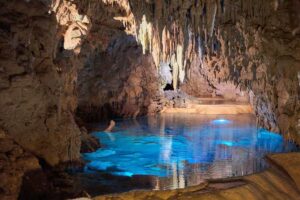
“Descending to the bottom of the cavity, the explorer walked around its perimeter and found a low passage, which continued for a few tens of meters until reaching a second huge cave that the light of the acetylene lamp was unable to illuminate *, later called Cave of Monuments “.
After a couple of days, Anelli accompanied by a Castellanese worker, Vito Matarrese continued his exploration, slowly discovering what today are the Corridor of the Serpent, the Desert and the White Cave.
Among stalactites and stalagmites there are also the Cavern of the Altar, the Cavern of the Dome and the Passage of the Presepio, where lies a stalagmite with Marian features, called Madonnina delle Grotte.
Next to the Castellana Caves, there is also the ‘Franco Anelli’ Speleological Museum which for years has hosted tourists and students for guided tours, educational workshops and speleo tourist visits. Another gem is the Speleonight, or the visit of the Castellana Caves in the dark, which takes place after closing to the public, for groups of at least 15 people.
The temperature inside the Castellana caves is cool so it is advisable to bring a sweater and, in general, comfortable clothing. During the night visit, visitors are guided by the guides of the Puglia Grotte Group equipped with helmet, canister and acetylene lighting: this serves to show along the walk, the colors, sensations and emotions experienced by the first explorers.
“The expert speleological guides guide the participants on a unique excursion, during which you can listen to the sounds of the caves and see and observe the fauna that populates them, or experience intense emotions like proceeding alone for a while”.
RELATED ARTICLES
Agriturismo Masseria Alberotanza B&B e Ristorante a Conversano
Secondary phone: +393317271337
Email: info@masseriaalberotanza.it

